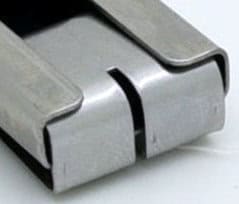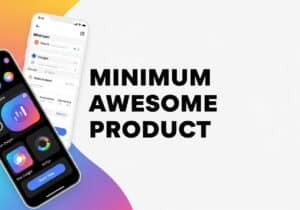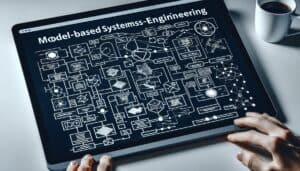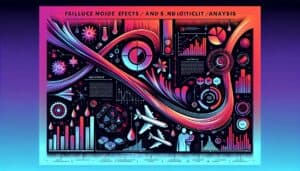أو كيف يمكن لمنتج مبتدئ بالفعل أن يكون أرخص في التصميم والتصنيع دون أن يؤثر ذلك على تجربة المستخدم النهائي. تحليل القيمة هو المفتاح ما هو مطلوب للعميل بالنسبة للوظائف ... والالتزام بذلك. مثال مشروع إعادة تصميم كامل، على منتج أساسي جداً ولكن حقيقي، لإظهار المفاهيم الأساسية للعملية.
يرجى إضافة/التعليق على اليمين
إخلاء مسؤولية: لا يوجد لدى innovation.world أي حافز مالي على الإطلاق، ولا أي ملكية في المنتج الذي تمت مراجعته. يتم اختيار المنتجات بناءً على العامل الوحيد المتمثل في وجود تصميمات مثيرة للاهتمام أو أصلية لمشاركتها مع الصناعات الأخرى. هذه المنتجات متوفرة في السوق منذ سنوات؛ لم يفصح موقع Innovation.world عن أي معلومات خاصة أو سرية ولا يفصح عنها، ولكن فقط ما هو ظاهر من خلال التفكيك والملاحظة والمعرفة من التقنيات المماثلة. ومع ذلك لاحظ أن هذه التصاميم قد تكون محمية ببراءة اختراع من قبل أصحابها. |
المنتج المختار عبارة عن قاطع من الفولاذ المقاوم للصدأ


التصميم الحالي

بما في ذلك هامش المتجر وضرائب 20%، سعر المستخدم النهائي 2 يورو!
يهدف هذا المنتج إلى أن يكون جزءًا من العروض الموسمية الخاصة في محلات السوبر ماركت الكبرى، "كل ذلك مقابل X€!" يتم تصنيعها واستيرادها وبيعها بكميات كبيرة.
كما سنرى، لا يزال هذا المنتج يقدم الكثير مقابل هذا السعر المنخفض (لقد رأينا قواطع أغلى من هذه القاطعة التي تحتوي على بلاستيك أكثر من الفولاذ المقاوم للصدأ، والجزء المعدني الوحيد كان من الفولاذ الأساسي الرقيق المطلي باللون الأسود).
[foogallery id=”138361″]
مواد جيدة
بشكل عام، النوعية جيدة جدًا، مصنوعة من الفولاذ المقاوم للصدأ للهيكل الرئيسي كما هو الحال بالنسبة للمشبك وبالطبع شفرة واحدة فقط تباع مع المنتج.
يبدو أن التغليف هو المفاضلة الوحيدة في هذا التصميم.
بالمناسبة: أثناء الحديث عن التعبئة والتغليف، فإن وجود شفرة القاطع غير محمية وقابلة للفصل دون كسر أي ختم أمر قابل للنقاش (ولكن من المحتمل أن تباع السكاكين الأطول أيضًا في مثل هذه المحلات التجارية غير محمية أيضًا)
إعادة تصميم محتملة
كمواصفات أساسية، دعنا نفرض بعض القيود النموذجية على إعادة التصميم:
- الاحتفاظ بالتقنيات نفسها؛ عدم وجود استثمارات خاصة (مثال نموذجي كان يمكن أن يكون لتكثيف المعدن للحد من الفولاذ المقاوم للصدأ)
- على الأقل بنفس الجودة والمتانة (مثال نموذجي: صفيحة معدنية أرق على الغلاف الرئيسي أو فولاذ مطلي منخفض الجودة)
- استخدام شفرة القاطع القياسية وتوفير عينة x1 (القيد الأكبر لأن هذا الاختيار يفرض بعض السعر الثابت، ويفرض الحجم الكلي للمنتج بحيث يفرض طريقة ربطه)
قائمة المواد الحالية (BOM)
مفصلة لأصغر مكوناتها:
| التعليقات | التكلفة التقديرية | ||||
| التجميع المكتمل | -الهيئة الرئيسية | صفائح معدنية، فولاذ مقاوم للصدأ، عدة ثنيات دقيقة | 60% | ||
| -مشبك التجميع الفرعي | -مشبك | صفائح معدنية، فولاذ مقاوم للصدأ، عدة ثنيات بنصف قطر صغير | 12% | ||
| -شريط بلاستيكي | ضئيلة | ||||
| -الملصق | 1% | ||||
| -التجميع الفرعي للشفرات | -الشفرة | مكون قياسي من مكونات الرفوف | 8% | ||
| -التجميع الفرعي للمقبض -المقبض الفرعي | -جسم المقبض | بلاستيك | 5% | ||
| -غطاء المقبض | بلاستيك | 4% | |||
| -الربيع | AISI 302؟ ثني AISI 302؟ | 5% | |||
| -التجميع والتحكم | الشرق الأقصى؟ | 5% |
التحليل الوظيفي
-الرسم البياني للعمل الداخلي القادم-
من الرسم البياني، من الواضح أن المنتج 3 مجموعات وظيفية التي تتعاون معًا وتحتاج إلى الحفاظ عليها بطريقة أو بأخرى.
- الشفرة من على الرف حسب المواصفات -بدون تغيير-
- "مبيت الشفرة": توجيه الشفرة + حماية اليد من بقية الشفرة أثناء القطع + سحب الشفرة هي وظيفة
- يمكن بالفعل تفريغ الجزء الخلفي من الهيكل لتقليل المعدن. لن يؤثر ذلك كثيرًا على صلابته، ويزيد من وزنه قليلاً و"يبدو" أكثر تقنية. لسوء الحظ، إما أن يكون مثقوبًا أو مقطوعًا بالليزر، سيُعقّد العملية ولن يقلل كثيرًا من التكلفة - لذا فهو حل غير ممكن-. لاحظ أنه لو كان مصنوعًا من مواد أكثر تكلفة وقابلة لإعادة التدوير، لكان الخيار مختلفًا، مثل سبائك النحاس التي تحتوي على رقائق ماكيناتها باهظة الثمن وقابلة لإعادة التدوير)
- مبيت أقصر؟ الطول الوظيفي هو أحد الشفرات فقط، حيث يجب أن يتم سحبها بالكامل داخل المبيت بالكامل، كل طول المبيت المتبقي يرجع فقط إلى خيارات التصميم، إن لم يكن إهدارًا فعلى الأقل عدم كفاءة التصميم. يُقدَّر ذلك بـ 20% من المبيت.
- "سدادة الشفرة":: يمكن أن تكون أي آلية، ما دامت تسمح بوظيفتين ومع وجود الشفرة على أطوال مختلفة في عمرها
- إدخال الشفرة وإخراجها
- أمسك الشفرة بإحكام في مواضع مختلفة
لاحظ أنه على الرغم من أن معظم المنتجات الموجودة في السوق تحل هاتين الوظيفتين بتجميع فرعي واحد، إلا أنه قد يكون مختلفًا

من التحليل الوظيفي: الشفرة القياسية هي المكون الرئيسي، وكل شيء مبني حولها. "القاطع" هو في الواقع مجرد حامل للشفرة.
ملحوظة: كان من الممكن أن يكون هناك نهج مختلف - من المواصفات المفروضة أعلاه - هو إعادة تصميم الشفرة، مثل تضمين شقوق عليها، أو أن يكون لها وجهان للقطع ...
العصف الذهني لمكونات قائمة المواد
- الجسم الرئيسي: الجزء الرئيسي والأثقل من المنتج؛ تغيير المادة إلى مادة أرخص سيكون خيارًا نهائيًا إذا كانت التكلفة هي الهدف الوحيد. ليس خياراً هنا
- ملصق + ملصق: ليس هناك بدائل أخرى أرخص ولكن متعددة الاستخدامات. قد يكون الملصق مباشرة على المنتج أرخص، ولكن سيكون من الصعب إعادة وضع العلامة التجارية (وهو في الأساس منتج من مصنعي المعدات الأصلية)، وليس مرئيًا جدًا في نقطة البيع ويصعب على المستخدم النهائي إزالته
- التجميع: بالفعل تكلفة شرقية بعيدة بالفعل، مع تجميع صغير نسبيًا ... كايزن يمكن أن يكون الحدث ممكنًا مباشرةً في خط التجميع، ولكن بالنسبة لـ %gain المحدود وخارج نطاق هذا المشروع
حلول مبتكرة لا تفي بالمواصفات المفروضة
انطلاقاً من التحليل أعلاه، حلول مبتكرة، ولكنها قابلة للاستخدام بمواصفات وسياق مختلفين
مع إعادة تصميم الشفرة، من خلال تضمين الشقوق على الشفرة، يمكن أن تكون سدادة الشفرة (ج) جزءًا من المبيت (ب) إذا كانت قابلة للتشوه، ومن المحتمل أن تكون من البلاستيك. إذا كانت الشفرة تحتوي على الشقوق
-رسم قادم-
غلاف قابل للتقشير: غلاف بلاستيكي حول الشفرة، يحمي اليد أثناء الاستخدام. يعمل كقلم رصاص: للحصول على طرف جديد (شفرة)، يتم قطع الغلاف؛
-رسم قادم-
المحلول #1
-رسم قادم-
الحل #2
-رسم قادم-
خاتمة
كان المنتج قبل المشروع مصممًا بشكل جيد بالفعل، ومصنوعًا بجودة مقبولة ورخيصًا، ولكنه لا يزال يسمح ببعض التخفيضات في التكلفة حتى دون تغيير التقنيات ومستويات الجودة المتوقعة
- قمع الغطاء الطرفي المنفصل (حلان على الأقل لذلك)
- تقليل طول الفولاذ المقاوم للصدأ إلى الجزء المفيد منه + الحد الأدنى لطول الزر
تصاريح تحقيق هدف التكلفة الكاملة للمصنع -15%

... عدم احتساب الأفكار الأخرى التي شوهدت
ملاحظة: إحدى الوظائف التي لم يتم التطرق إليها هنا هي الأخدود الموجود على الغطاء الطرفي، والذي يسمح بقطع الشفرة إلى قطع بمجرد تآكلها -انظر على اليمين-
يُفترض هنا أن المستخدمين الذين يستخدمون القاطع بكثرة لديهم أدوات ووسائل أخرى للقيام بذلك، مثل الكماشة.
كان من الممكن أن تكون الخيارات الأخرى في سياق مختلف:
- تغيير التقنيات (البلاستيك، فولاذ مطلي ...)
- نهج Lean Sigma Lean Sigma في عملية التجميع لتقليل تكلفتها (هنا للإشارة فقط، حيث إن التجميع جزء صغير من التكلفة)
| ||
الأرخص بلاستيك بالكامل قابلة للتبديل ولكن الشفرة ذات الاستخدام الواحد | نفس التقنيات، مع اختلاف الموقع السوقي قاطعة معدنية مطلية منخفضة التكلفة | تقنيات مختلفة بلاستيك بقبضة بلاستيكية مصبوب فوق القالب جيد يمكن تأمين الشفرة بإحكام في كل موضع |












مقال مثير للاهتمام. ولكن أليس تخفيض تكلفة 15% متفائلاً للغاية؟ قد يؤثر ذلك على جودة المنتج أو وظائفه، ألا تعتقد ذلك؟
منشورات ذات صلة
معادلة الرفع المنقحة للمعهد الوطني للسلامة والصحة المهنية في بيئة العمل
الشبكة المظلمة مقابل الشبكة المظلمة مقابل الشبكة العميقة 101 والمزيد
أحدث المنشورات وبراءات الاختراع حول الأتمتة الخلوية
أدوات الشبكة المظلمة للهندسة والعلوم
101 حول كيفية قراءة براءة الاختراع بشكل أفضل (لغير الوكلاء المتخصصين في براءات الاختراع)
أفضل 20 حيلة للبحث المجاني عن براءات الاختراع + مكافأة